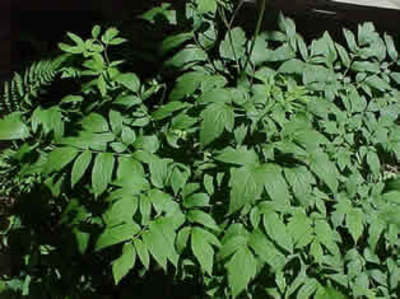Black Cohosh for Menopausal Symptoms

Black Cohosh (Actaea racemosa or Cimicifuga racemosa) is a commonly used herb also known as baneberry, black snakeroot, bugbane, squawroot, rattle root. It is most often prescribed for the treatment of symptoms related to menopause. As with many herbs, the purity and constituents of most Black Cohosh products has generally not been well established.
There are three major active constituents of Black Cohosh:
Triterpene glycosides,
Phenolic constituents, and
Formononetin
The May 17 issue of the Journal of Agricultural & Food Chemistry reported that of 11 Black Cohosh products analyzed for these three constituents, 3 only contained an Asian adulterant (Asian Actaea) instead of Black Cohosh, and 1 contained both genuine Black Cohosh and Asian Actaea. For the products containing only Black Cohosh, there was significant product-to-product variability in levels of the selected triterpene glycosides and phenolic constituents and no formononetin was detected at all.
The way in which Black Cohosh is thought to work is by reducing the levels of luteinizing hormone (LH) and modulating estrogen. LH is a pituitary hormone that stimulates the ovary to produce estrogen and testosterone. As estrogen levels fall, the pituitary responds by increasing its production of LH. And the increasing levels of LH are implicated in the production of some menopausal symptoms. The Black Cohosh binds to the estrogen receptor, reducing the production of LH. Therefore by reducing LH, Black Cohosh reduces the production of estrogen that is responsible for some menopausal symptoms. It is useful to know this: three days ago I was asked to consult on the treatment of a woman who had her ovaries removed, was on hormone replacement therapy, but was taking Black Cohosh for menopausal symptoms. It had not helped her, which was not surprising: the evidence shows that you need at least one ovary for it to work.
I would also like to mention a program for professionals that I wrote late last year. It is available here. Although designed for health care professionals, it is one of the most comprehensive and up to date reviews on the uses, side effects and interactions of over twenty of the most commonly used herbal remedies. There is also a detailed discussion of how to work out if a remedy is likely to interact with prescription medicines and a comprehensive set of resources: scientific references, books and websites, together with advice on obtaining effective herbs.
Oh yes, and some really nice pictures of all the herbs that I discussed!
Technorati tags: Black Cohosh Menopause Herbal remedies






